Bergamo – A jewel between the Alps and Lombardy
Bergamo is a city of rare beauty, divided into two worlds: the lively lower town (Città Bassa) and the medieval upper town (Città Alta), perched on a hill. Shaped by Venetian rule, religious tradition and cultural wealth, Bergamo tells its story through palaces, churches and squares that have grown over centuries. A walk through this city is a journey through eras – from Roman heritage to modern times.
My walking tour begins in the vibrant Porta Nuova Piazza, the modern gateway to Bergamo’s lower town, or Città Bassa.

This grand square was developed in the early 20th century, framed by neoclassical buildings and marked by the symmetrical Propylaea, twin structures built in 1837 that once served as customs houses. Their columns and clean lines give the square a ceremonial feel, welcoming visitors to a city where old and new coexist.
Just a few steps away, you enter the Centro Piacentiniano, the elegant urban center designed between 1912 and 1927 by architect Marcello Piacentini.

It represents a rationalist approach to urban planning, with broad avenues and monumental buildings in the neoclassical and eclectic style. This area was part of Bergamo’s modernization in the early 20th century, designed to give the city a contemporary identity while preserving harmony with its historical essence.
Continuing north, you come to the Teatro Donizetti, a neoclassical theater inaugurated in 1791 and later named after the famous composer Gaetano Donizetti, who was born in Bergamo. The theater’s elegant façade and horseshoe-shaped interior embody the grandeur of late 18th-century Italian theater architecture. It remains a cornerstone of Bergamo’s cultural life and a proud tribute to the musical genius who brought international fame to his hometown.
Heading northwest, you pass the small but historically significant Chiesa dei Santi Bartolomeo e Stefano, built in the 17th century in Baroque style.

Behind its austere façade lies an interior rich with artistic treasures, including a masterpiece by Lorenzo Lotto: the Martinengo Altarpiece, painted in 1516. The church reflects the Counter-Reformation’s influence on sacred architecture, emphasizing emotion and spirituality.
Further along the main street stands Palazzo Frizzoni, a stately 19th-century palace that now houses the City Hall.
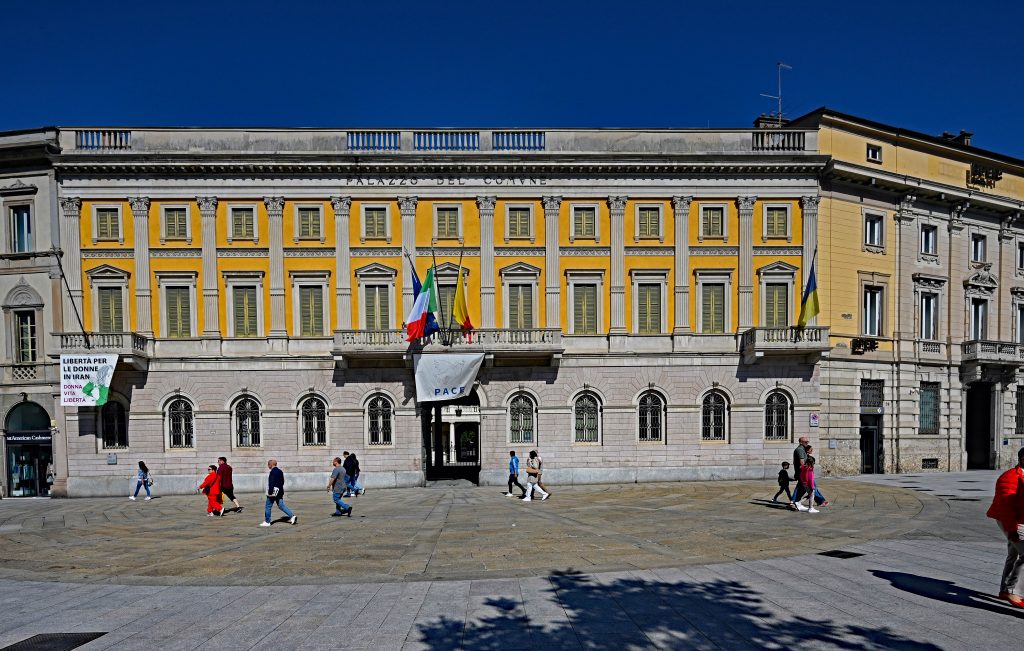
Completed around 1870, it is built in a neoclassical style, reflecting the civic pride of post-unification Italy. Its harmonious proportions and dignified appearance underscore its role as a center of municipal power.
Close by is the Chiesa di Santa Lucia, a modest but charming Baroque church built in the 18th century. Dedicated to Saint Lucy, the patron saint of the blind, it offers a moment of quiet reflection. The church is a reminder of Bergamo’s deep-rooted popular faith and the many small sanctuaries that still mark its urban landscape.
Leaving the lower town behind, you ascend towards Città Alta, the old upper city, entering through the majestic Porta San Giacomo.
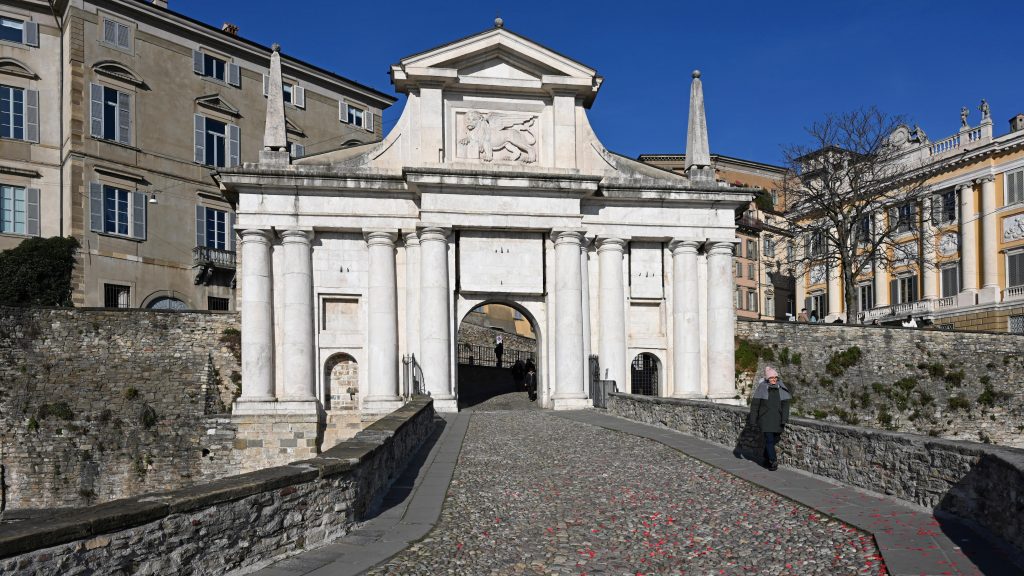
This imposing white marble gate, built in 1592 during Venetian rule, is one of the four entrances to the fortified city. Constructed in Renaissance style, it is both defensive and ceremonial, offering a breathtaking view over the plains as you cross the threshold into a different world.
Once inside, your path leads you to the heart of Città Alta: Piazza Vecchia. This perfect Renaissance square was laid out in the 15th century, with symmetrical proportions that delighted even Le Corbusier, who called it “the most beautiful square in Europe.” It is flanked by remarkable buildings that span centuries of Bergamo’s history.
Dominating the square is the Palazzo della Ragione, originally constructed in 1199 and considered the oldest communal palace in Lombardy. Its Romanesque core was modified in Gothic style during the 14th century. The building served as a seat of city government and justice, symbolizing Bergamo’s medieval autonomy.
Beside it rises the Campanone, or Civic Tower, whose foundations date to the 11th century. It was once the private tower of a noble family but became the city’s bell tower in the Middle Ages. Every night at 10 p.m., its bell still tolls 100 times, a tradition that once signaled the city’s curfew.

A short walk away is the ornate Colleoni Chapel, built between 1472 and 1476 as the personal mausoleum of Bartolomeo Colleoni, a Venetian military commander. This Renaissance masterpiece was designed by Giovanni Antonio Amadeo, with a striking polychrome marble façade and intricate reliefs that celebrate both military glory and divine grace.
Next to the chapel stands the Cattedrale di Sant’Alessandro Martire, Bergamo’s cathedral, dedicated to the city’s patron saint. The current structure was built primarily in the 17th and 18th centuries in Baroque style, though it stands on the site of much older churches. Its dome and ornate interior make it one of the spiritual centers of Bergamo.

Also adjoining the square is the Palazzo del Podestà, originally a 14th-century residence for the Venetian governor. It was renovated in the 16th century and features Renaissance elements. Today, it hosts the Museo del Cinquecento, telling the story of Bergamo in the 1500s, a century of change and artistic flowering.
In the early 1100s, a terrible plague epidemic swept through Europe, sowing death and desolation. The inhabitants of Bergamo, terrified and desperate, decided to ask for help from the Madonna:
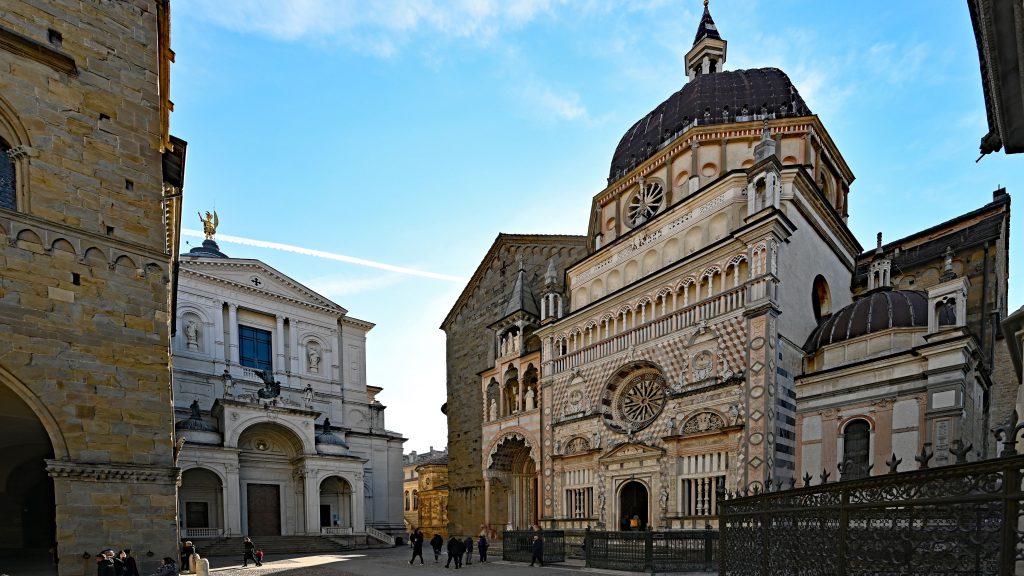
if she protected them from the contagion, they would dedicate a church to her as a sign of eternal gratitude. Fortunately, the plague began to recede, and the people of Bergamo, true to their word, in 1137 followed up on the solemn vow. In Piazza del Duomo, in the beating heart of Città Alta, work began on the construction of the Basilica of Santa Maria Maggiore.
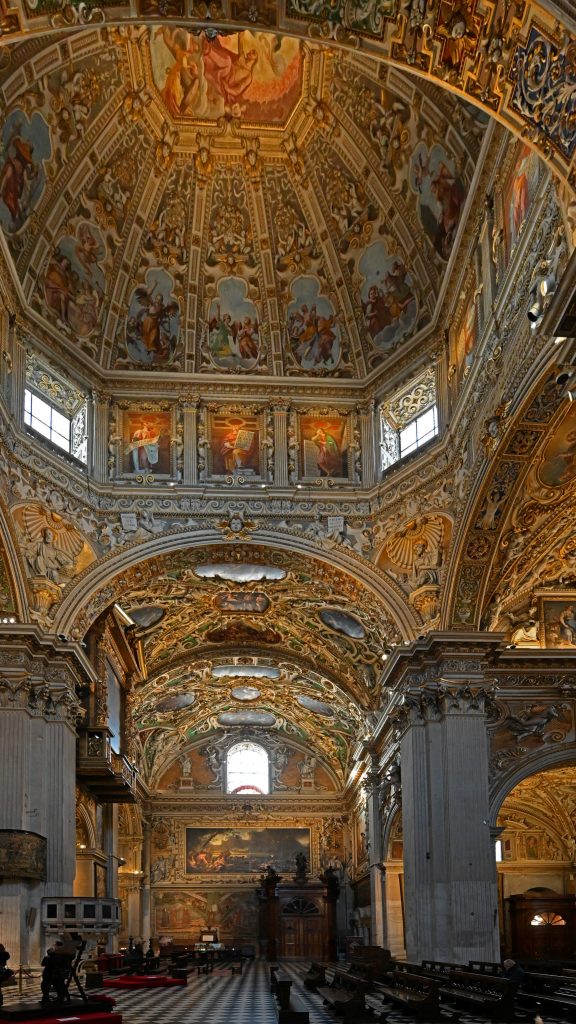
They did things in style, demonstrating their devotion and artistic ability: the church immediately revealed its splendor and was further embellished in the centuries that followed, becoming a true treasure chest.
Art and Splendor: Lorenzo Lotto and the Basilica’s Tapestries
Luminous frescoes, elaborate stuccoes, precious tapestries and wooden inlays designed by the famous artist Lorenzo Lotto now decorate the interior of the building, creating an atmosphere of solemn beauty. Lotto’s works, in particular, represent a culmination of Renaissance art in Bergamo, with vibrant colors and expressive figures.
Heading northeast, you reach the Torre del Gombito, a 12th-century stone tower built by one of the city’s powerful families. At 52 meters tall, it once served as a lookout and symbol of noble power. Visitors can climb to the top for a stunning view over the medieval rooftops of Città Alta.
Continuing further up the hill, you come to the Monastero di Sant’Agostino, founded in the late 13th century by Augustinian friars.
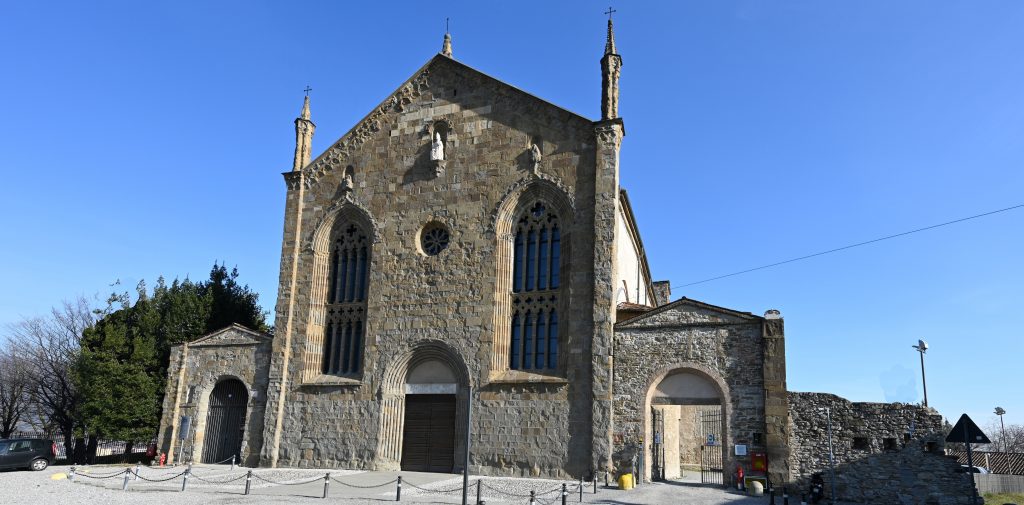
The complex was expanded over the centuries and includes elements of Gothic and Renaissance architecture. It now forms part of the University of Bergamo, symbolizing the city’s blend of heritage and modern learning.
The tour concludes at the Seminario Vescovile Giovanni XXIII, named after the beloved Pope John XXIII, who studied here as a young man. The seminary was established in the 17th century and later expanded. Today it remains an important center for theological education, linking Bergamo’s religious past to its spiritual present.